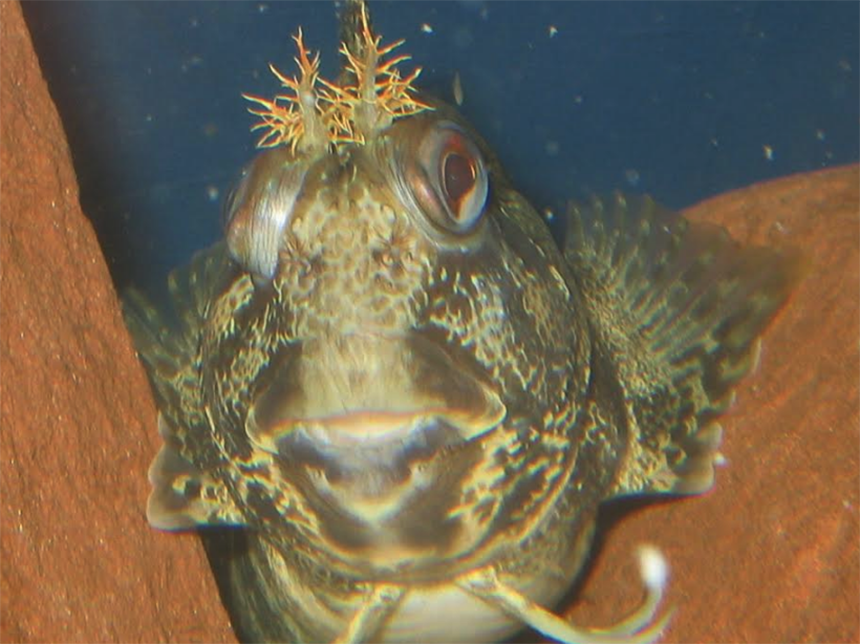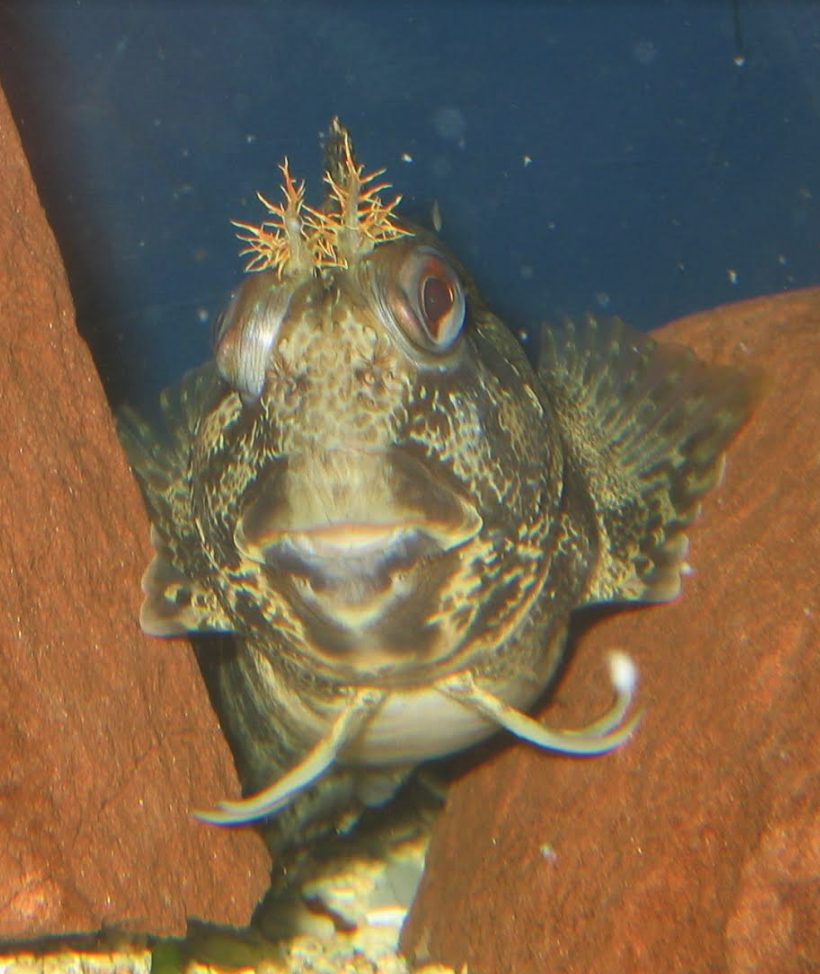Wildlife of The Solway Firth Number 75 The Tompot Blenny

Wildlife of The Solway Firth Number 75 The Tompot Blenny (parablennius gattorugine) By Mark Vollers
How distinctive and easily recognised these fish are with their feathery head tentacles and faces that radiate charisma!
They are found in shallow rocky coastal waters of Western Europe, the Mediterranean and North Africa, sometimes in rockpools low down on the beach.
They can occasionally grow up to 30cm long in deeper water and as such are the largest of British blennies.
We are generally fortunate enough to have them living in The Lake District Coast Aquarium displays where they quickly adapt to the rocky theme-ing, coming out to feed and observe their observers as they are highly inquisitive!
Those we have in the aquarium are provided by fishermen who sometimes find them riding in the lobster pots when they are hauled on board. They have evolved strong pectoral fins for levering themselves in and out of rock crevices which provide shelter from predators and stormy weather.
They guard their adopted homes against all comers with their strong jaws and comb-like teeth which they also use to scrape food from hard surfaces and consume sea anemones. Careful observation shows that all these blennies can be told apart by differing markings on their heads
Female blennies are attracted into rock crevices in late Spring to deposit their eggs for the resident males to fertilise, and he will guard them and successive batches of eggs until hatching a few weeks later.



